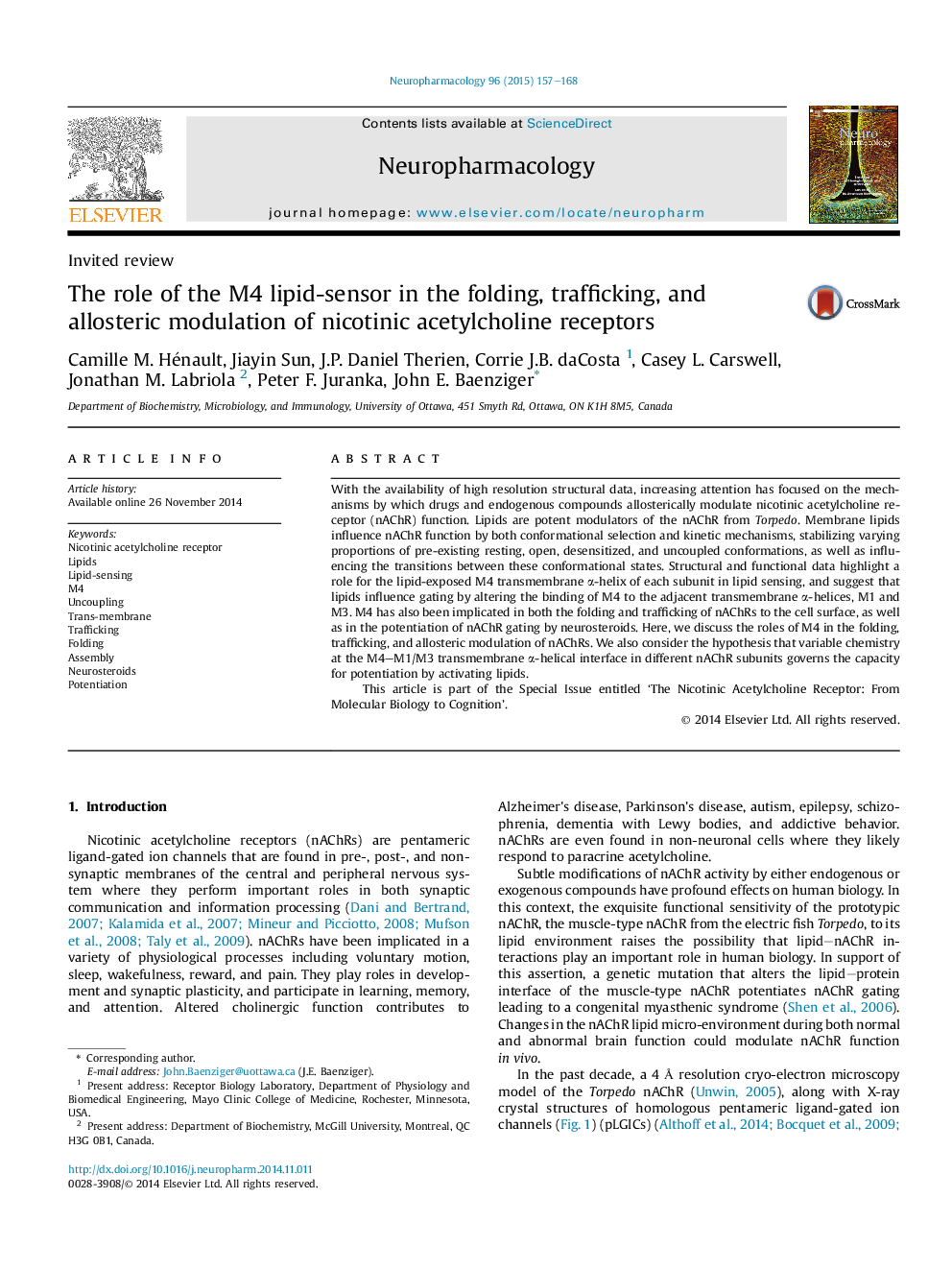| کد مقاله | کد نشریه | سال انتشار | مقاله انگلیسی | نسخه تمام متن |
|---|---|---|---|---|
| 2493152 | 1115474 | 2015 | 12 صفحه PDF | دانلود رایگان |

• Lipidic modulation of nicotinic receptor function may influence cholinergic biology.
• Lipids can stabilize a conformation where agonist binding is uncoupled from gating.
• The M4 transmembrane α-helix is involved in lipid-sensing and neurosteroid action.
• Proper folding of M4 is required for trafficking to the cell surface.
• M4 is an intrinsic allosteric regulator of nicotinic receptor function.
With the availability of high resolution structural data, increasing attention has focused on the mechanisms by which drugs and endogenous compounds allosterically modulate nicotinic acetylcholine receptor (nAChR) function. Lipids are potent modulators of the nAChR from Torpedo. Membrane lipids influence nAChR function by both conformational selection and kinetic mechanisms, stabilizing varying proportions of pre-existing resting, open, desensitized, and uncoupled conformations, as well as influencing the transitions between these conformational states. Structural and functional data highlight a role for the lipid-exposed M4 transmembrane α-helix of each subunit in lipid sensing, and suggest that lipids influence gating by altering the binding of M4 to the adjacent transmembrane α-helices, M1 and M3. M4 has also been implicated in both the folding and trafficking of nAChRs to the cell surface, as well as in the potentiation of nAChR gating by neurosteroids. Here, we discuss the roles of M4 in the folding, trafficking, and allosteric modulation of nAChRs. We also consider the hypothesis that variable chemistry at the M4–M1/M3 transmembrane α-helical interface in different nAChR subunits governs the capacity for potentiation by activating lipids.This article is part of the Special Issue entitled ‘The Nicotinic Acetylcholine Receptor: From Molecular Biology to Cognition’.
Figure optionsDownload as PowerPoint slide
Journal: Neuropharmacology - Volume 96, Part B, September 2015, Pages 157–168